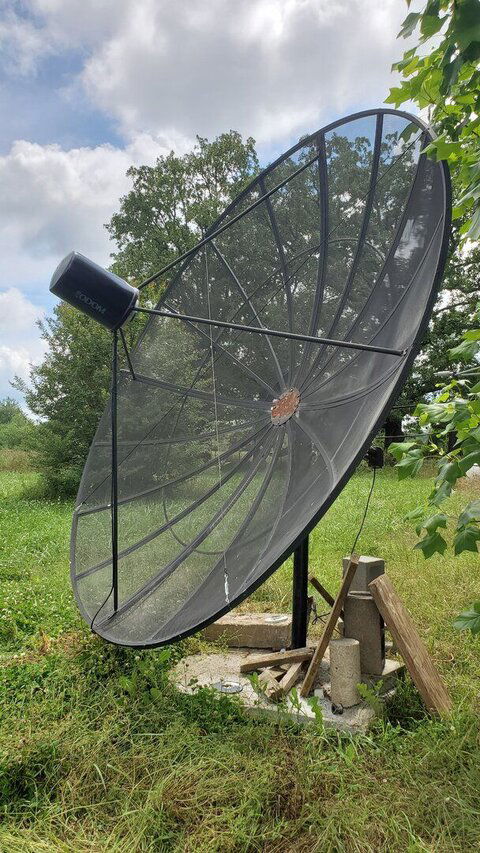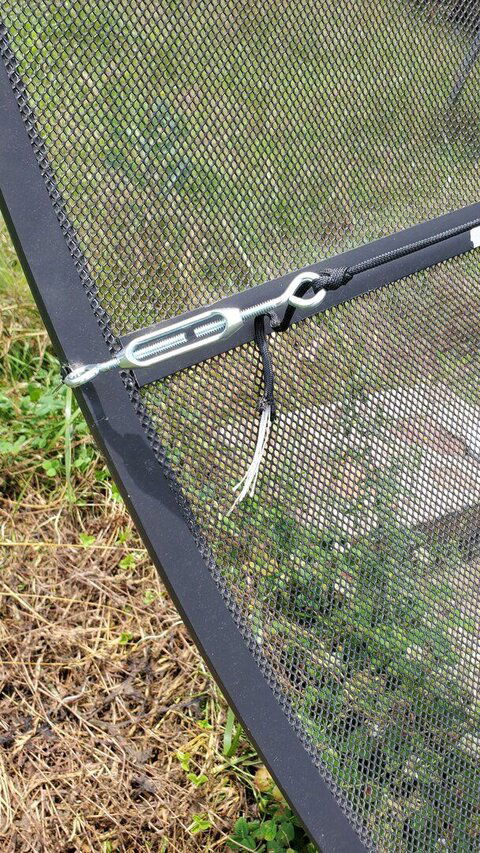I got out and tinkered with my 10ft Odom BUD I saved from a golf course. It is a good performer for being older than myself.
But it has one flaw.
There is a slight bend in it that has caused it to loose shape. It is not very noticeable during a string test. But enough to see room for improvement in some signal quality readings.
So I will stress the importance of a string test. It is essential with locking higher FEC digital signals to have a true shapen dish. I checked mine top to bottom and side to side and noticed that my side to side string tugged my top-bottom string down 1/2". It didn't seem like much. Until I decided to put tension on that string and the shape became true. My quality % improved up to 5-6% on many transponders!
And I didn't bother taking my old BUD apart. Lazy, I know but the hardware like bolts and nuts have 30+ years of "age". I'd have been replacing them left and right while trying to disassemble it.
Here is a cheap freebie tip. I used paracord from the Dollar Tree and a turnbuckle from a local supply shop. Took 10 min to throw on. And the paracord is nearly invisible at first sight.
Next project will be new paint!
But it has one flaw.
There is a slight bend in it that has caused it to loose shape. It is not very noticeable during a string test. But enough to see room for improvement in some signal quality readings.
So I will stress the importance of a string test. It is essential with locking higher FEC digital signals to have a true shapen dish. I checked mine top to bottom and side to side and noticed that my side to side string tugged my top-bottom string down 1/2". It didn't seem like much. Until I decided to put tension on that string and the shape became true. My quality % improved up to 5-6% on many transponders!
And I didn't bother taking my old BUD apart. Lazy, I know but the hardware like bolts and nuts have 30+ years of "age". I'd have been replacing them left and right while trying to disassemble it.
Here is a cheap freebie tip. I used paracord from the Dollar Tree and a turnbuckle from a local supply shop. Took 10 min to throw on. And the paracord is nearly invisible at first sight.
Next project will be new paint!



